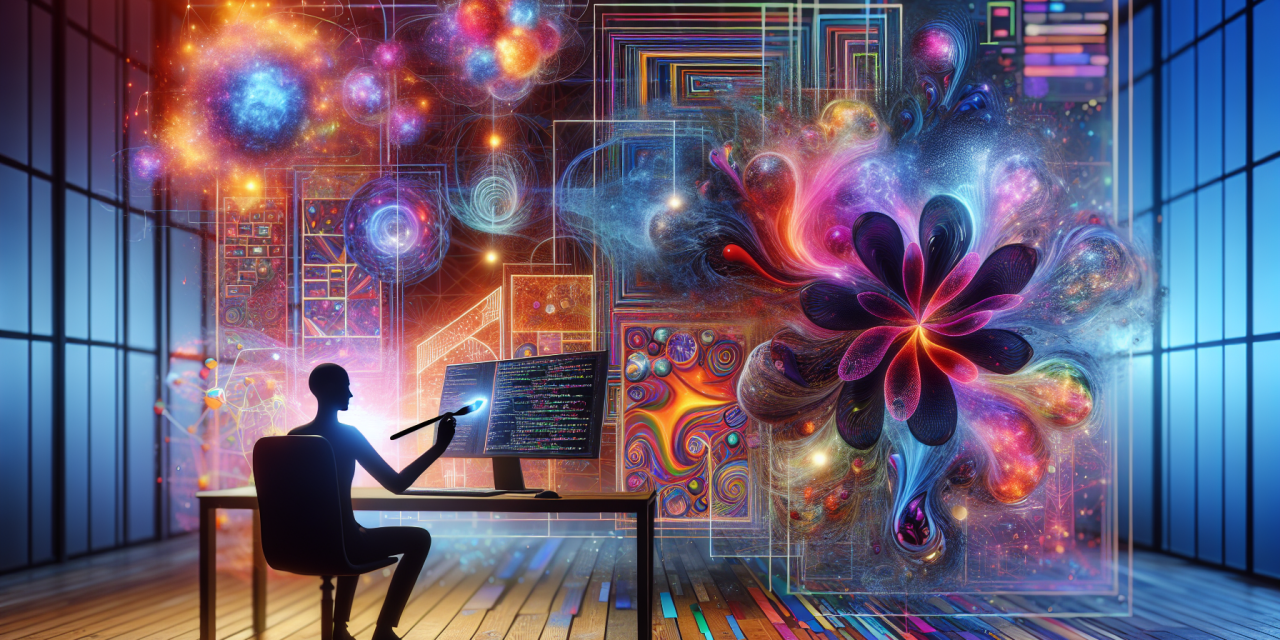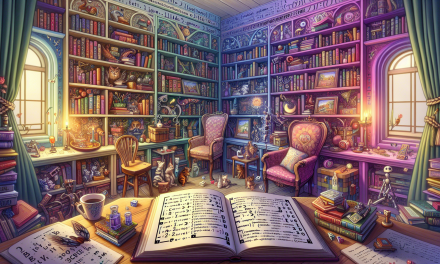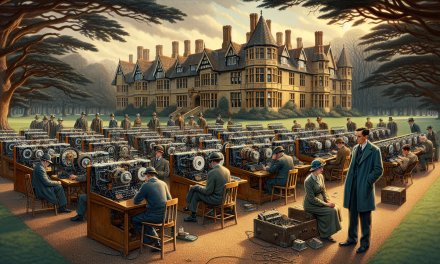Picture this: You’re sitting at your computer, a blank canvas glowing on your screen. In one workspace, you’ve got some simple code humming quietly, generating mesmerising patterns with mathematical precision. In another window, an AI is dreaming up wild, impossible textures that no human brain could conjure alone. And in your hands? A digital brush, ready to blend these two creative forces into something entirely your own.
Welcome to the delightful intersection where human creativity meets artificial intelligence, where code becomes a paintbrush, and where you discover that making art with technology isn’t just possible—it’s absolutely magical.
The Art of Happy Accidents
Let’s start with something wonderfully simple. Generative art is like teaching your computer to doodle. You write a few lines of code that say things like “draw a circle here, make it this color, move it a little bit, then do it again”—and suddenly, your computer becomes an art-making machine that never gets tired, never runs out of ideas, and always surprises you.
Think of it like setting up dominoes. You arrange the first few pieces (your code), give them a gentle push (run the program), and watch as something beautiful unfolds in ways you never quite expected. The magic lies in that sweet spot between intention and surprise.
Here’s where it gets really interesting: you don’t need to be a coding wizard to create stunning generative art. Simple loops that repeat shapes, colors that shift gradually across the spectrum, or points that dance according to mathematical functions can produce artwork that would make any gallery jealous. The computer handles the tedious repetition while you focus on the creative decisions.
When AI Joins the Creative Process
Now, imagine inviting an AI collaborator to your digital art studio. This isn’t about replacing human creativity—it’s about expanding it. AI excels at generating patterns, textures, and forms that exist in spaces our brains might never wander into on their own. It can create swirling galaxies of texture, impossible architectural details, or color combinations that feel both alien and achingly beautiful.
The fascinating thing about AI-generated patterns is that they often contain a kind of organized chaos. While your code might create perfect geometric repetitions, AI brings organic unpredictability. It’s like the difference between a precisely planted garden and a wildflower meadow—both beautiful, but in completely different ways.
You might ask an AI to generate cloud-like textures, and it responds with something that looks like cotton candy made of starlight. Or perhaps you request abstract patterns inspired by microscopic organisms, and suddenly you’re working with forms that seem to pulse with digital life. The AI becomes your creative research assistant, generating raw material that you can shape, combine, and transform.
The Human Touch: Where You Become the Conductor
Here’s where the magic truly happens—when you step in as the orchestrator of this digital symphony. You’ve got patterns from your code dancing in perfect mathematical harmony. You’ve got wild, unexpected textures flowing from your AI collaborator. Now comes the most exciting part: blending them together with your uniquely human sense of what looks right, what tells a story, what makes you feel something.
This is where your judgment, intuition, and personal aesthetic vision become irreplaceable. Maybe you take those precise geometric shapes from your code and let them float through the organic textures the AI created. Perhaps you use your generative patterns as a framework, filling in the spaces with AI-generated details like a digital coloring book that reinvents itself.
The remixing process is deeply personal. You might find yourself drawn to certain color combinations, or discover that rotating an AI pattern by just fifteen degrees transforms it from chaotic to harmonious. Sometimes you’ll overlay multiple elements with different transparencies, creating depth and visual conversations between the mathematical and the mysterious.
Building Your Digital Art Laboratory
Getting started doesn’t require expensive software or years of training. Many coding environments let you create generative art with just a few lines of code. You can begin with simple shapes and colors, gradually adding complexity as your confidence grows. Meanwhile, AI art tools have become remarkably accessible—some work right in your web browser, requiring nothing more than descriptive text to generate stunning visual material.
The beautiful thing about this approach is that every element serves a different purpose. Your code provides structure and repeatability—you can always generate more variations of your geometric patterns. The AI contributes surprises and organic elements that push your work in unexpected directions. And your human touch ties it all together, making decisions about composition, color harmony, and emotional impact that no algorithm can replicate.
Start small and experiment freely. Create a simple pattern generator that draws overlapping circles in random colors. Ask an AI to create some abstract textures inspired by your favorite natural phenomenon. Then open both in your favorite image editor and start playing. Move elements around, change their transparency, try different blending modes. There’s no wrong way to explore.
The Joy of Collaborative Creation
What emerges from this three-way collaboration between you, your code, and AI is something none of you could create alone. Your code brings mathematical precision and infinite variation. The AI contributes patterns and textures from vast trained models of human creativity. And you provide the crucial element of intentional curation—deciding what works, what doesn’t, and how to weave it all together into something meaningful.
This process reveals something profound about creativity itself. Art has always been collaborative, drawing inspiration from nature, other artists, and the tools available to us. Adding AI and code to your creative toolkit doesn’t diminish your artistic voice—it amplifies it, giving you access to new forms of expression that previous generations of artists could only dream about.
The next time you see a stunning piece of digital art, remember that it might be the result of exactly this kind of beautiful collaboration. And perhaps more importantly, remember that you have everything you need to start creating your own digital masterpieces, guided by code, inspired by AI, and shaped by your uniquely human creative vision.








